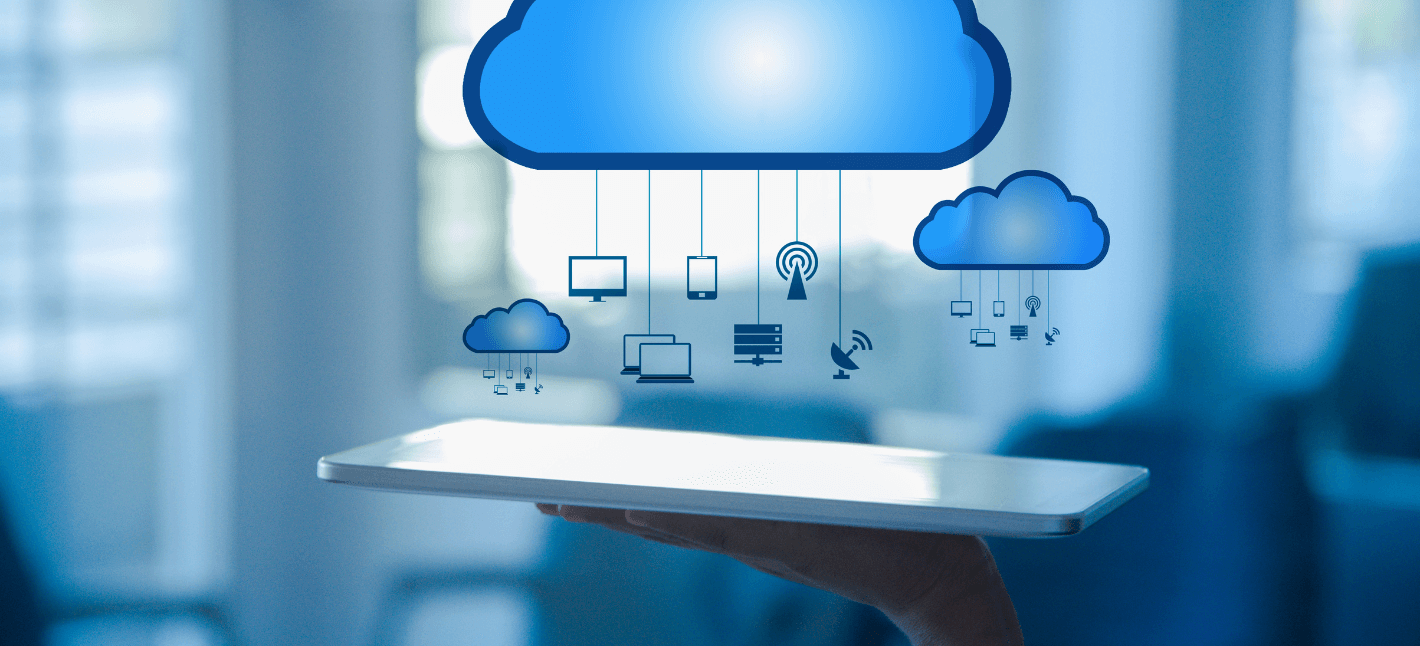The current rate of IoT implementation is at an all-time high. Even with a solution architecture and flexible network plans, there are some applications that can generate massive chunks of data. Edge computing or Edge processing in IoT can help cope with such applications in an efficient and effective manner without compromising bandwidth, storage, or response time.
Have you heard about Edge computing? If not, you’re not alone! Edge computing is a relatively new concept in the world of technology that has been gaining more and more attention lately. In this article, we will dive deeper into what it means exactly and how Edge processing is relevant to the Internet of Things (IoT) area.
What is edge computing in IoT?
Edge computing refers to a novel way of computing data or information in a distributed manner. Sounds too complicated? So, what exactly is Edge computing? In simple terms, Edge computing refers to the practice of processing and analyzing data close to the source of where it is generated (For example, in autonomous vehicles). In contrast to having all your devices and applications connect to a central server somewhere, data processing and analysis happen closer to where the data is generated, such as on the device itself or on a nearby server.
The example of a smart self-driving car (autonomous vehicle) was mentioned – to explain this example further: there is a smart device in a car that does calculations allowing autonomous driving, and thanks to doing this locally, it is preventing the usage of an enormous 1TB of data per minute because this is how much it would be to send it to the cloud or external servers and then get it back to the car. Thanks to edge computing, the smart car only uses data from the backend when needed, and the data is processed not in a permanent stream – but only when necessary.
For many use cases, the amount of data is so big that Edge Computing is the only means to cope with it. The main concept behind Edge computing and IoT is eliminating the need to process data on the cloud, reducing response time, saving cloud storage, and managing the enormous data size.
What are the three ways of data computing
Edge computing can be a game changer when it’s implemented in the right efficient way. Here are the three ways data computing can take place based on the involvement of IoT Edge computing:
- On-premise edge computing:
On-premise Edge computing does exactly what the name suggests. Here the data processing takes place within the hardware node or the gateway or on-premise local hardware without needing cloud resources. This is the purest form of edge computing.Here IoT devices and solutions can quickly derive data insights without cloud delays or internet bandwidth consumption. Once the data processing is concluded, only the results or outputs are sent to the cloud as results. This saves bandwidth, online resource charges, and data transmission time. As mentioned before, for example, a driving assistance system in a car can avoid sending huge video footage to the cloud by processing it on the device locally and sending only the useful footage to the cloud as the output. - Hybrid edge computing:
In this approach, the Edge or Edge computing device partially detects the useful part of the captured data and sends it to the cloud for further processing. It limits bandwidth and time needs to a certain limit while allowing the performance and resources of cloud computing.For example, a driving assistance system can record and process huge amounts of footage with limited performance. Here it leaves all the potentially important parts of the footage for cloud computing to analyze further. Dividing the role of processing into two parts, leveraging the best of both options. - On-cloud computing:
This is a computing model without Edge computing with IoT applications. The entire data acquired is sent to could for storing, processing, and recording the analyzed outputs. Being fully cloud, it can be costly, consume bandwidth, take time to upload, and lead to the need for higher storage space.
IoT vs. Edge computing: how do they go together?
IoT refers to the communication between devices and the internet, such as smart devices collecting and sharing data over the internet. Edge computing, on the other hand, is a method of processing data at or near the source of the data.
IoT and Edge computing can often go together where Edge computing processes IoT device data locally rather than sending massive data to a cloud. Such Edge processing reduces the amount of data sent over the network and offers a handful of advantages as given:
- Real-time data analysis and decision making
- Reducing the data size to manage and store on the cloud
- Reducing latency as less data is transferred
- Saving money on network transmission costs
- Allows local encryption and physical security
- Complete control over managing and improving the Edge computing capacity of the device
In summary, Edge computing is the future of IoT applications where collected data is massive and quicker data processing is essential. Especially, Edge computing can offer great value for applications involving camera and audio recordings. This technology has many positives, but we also need to mention the drawbacks, like the power consumption of the edge device with increasing processing power. Because of this, devices also become technically more complex in production.

From TechTarget.com
14 Examples of Edge Computing in IoT Smart Devices
Edge computing refers to the practice of processing and analyzing data at the edge of the network, closer to where the data is generated, instead of sending it to a centralized server or cloud for processing. This approach is particularly useful in IoT applications, where sensors and other devices generate large amounts of data, and real-time processing is often required. Here are some examples of edge computing in IoT:
- Remote monitoring of assets in the oil and gas industry
Oil and gas companies use edge computing to remotely monitor assets such as drilling rigs, pumps, and pipelines. Edge devices collect data from sensors and other sources, analyze it in real time, and send alerts when anomalies or faults are detected. This helps companies optimize their operations, reduce downtime, and improve safety. - Smart grid
Edge computing is utilized in smart grids to analyze data from sensors on power lines, transformers, and other equipment. This helps utilities detect faults, predict outages, and optimize energy distribution to improve efficiency and reduce costs. - Predictive maintenance
Edge computing is used for predictive maintenance in various industries, including manufacturing, transportation, and healthcare. By analyzing data from sensors and other sources, edge devices can detect equipment failures before they occur, reducing downtime and maintenance costs. - In-hospital patient monitoring
In healthcare, edge computing can be used to analyze data from wearable devices and sensors to monitor patients’ health and wellbeing. This can help detect health issues early and provide timely interventions. - Virtualized radio networks and 5G (vRAN)
The rollout of 5G networks is driving the adoption of virtualized radio networks (vRANs), which use IoT devices to process data closer to the user. This reduces latency and improves network performance, which is particularly important for applications such as autonomous vehicles and augmented reality. - Cloud gaming
Cloud gaming services use edge computing to deliver high-performance gaming experiences to users. Edge devices reduce latency and improve the overall gaming experience by processing game data closer to the user. - Smart Agriculture
In agriculture, edge computing can be applied to analyze data from sensors on crops and soil. This can help farmers optimize crop yields, reduce waste, and conserve resources such as water and fertilizer. - Content delivery
Content delivery networks (CDNs) use edge computing to deliver content such as video, audio, and images to users. By caching content on edge devices closer to the user, CDNs reduce latency and improve the overall user experience. - Industrial Automation
In industrial settings, edge computing can be used to analyze data from sensors on machines and equipment. This can help detect issues such as equipment failure, optimize performance, and reduce downtime. - Machine And Computer Vision
Edge computing is used in machine and computer vision applications to process real-time data from cameras and other sensors. This is important for applications such as surveillance, object detection, and autonomous vehicles. - Traffic management
IoT devices with edge computing are used in traffic management systems to analyze data from sensors and cameras on roads and highways. This helps authorities monitor traffic conditions, detect accidents and other incidents, and optimize traffic flow. - Smart homes
Edge computing can be utilized in smart homes to analyze data from sensors and devices such as security cameras, thermostats, and smart appliances. By processing this data locally, the system can respond more quickly to changing conditions and reduce the need for data transmission to the cloud. - Intelligent Transportation Systems
Together with edge computing, IoT smart devices are also used in intelligent transportation systems (ITS) to improve safety, reduce congestion, and improve the overall transportation experience. ITS applications include vehicle-to-vehicle communication, smart traffic signals, and real-time route optimization. - Autonomous vehicles
One of the first things self-driving vehicles may be used for is called “autonomous platooning.” This means a group of trucks can drive very closely together in a line, which saves money on fuel and helps reduce traffic. The system can make decisions quickly and respond to changing conditions in real time by locally processing data from sensors and cameras on the vehicle. With edge computing, the trucks can communicate with each other quickly, which means that only the first truck needs a driver, and the others can drive by themselves. This example is very exciting but is still not implemented in the real world. Since no roads or people are walking, using autonomous driving on fields with agriculture use cases will be much easier. For autonomous vehicles to fully operate in our daily lives, we still have to wait and see what the future will bring.
Difference between Edge Computing and Cloud Computing
Cloud computing is when all your computer programs and data are stored and processed on a remote server, and you access them over the internet. This can be really convenient, but it can also cause some delays if your internet connection isn’t very fast or the remote server is far away.
On the other hand, Edge computing is when some of the processing and storage happens closer to where the data is being generated, like on a device or on a server that’s physically closer to you. This can make things faster and more efficient, especially for things like real-time applications.
Here’s an example. Let’s say you have a smart home security system. If you have a cloud-based system, all the data from your security cameras and sensors is sent to a remote server to be processed and analyzed. But with an edge computing system, some of that processing can happen on the device or a local server. This can make your security system more responsive and faster because you don’t have to wait for data to be sent back and forth over the internet.
It’s important to note that cloud and edge computing aren’t mutually exclusive – both systems work together. It is very unusual that an edge device is completely working stand-alone. For example, you could use edge computing for real-time data processing on the devices and then send the results to the cloud for further analysis and storage.
Main Benefits of Edge Computing
Edge computing has many benefits that can make a real difference for businesses. As you can see in the examples above, many applications change the different areas of industries already in the present times – smart cities, medical smart devices, or even agriculture. It also offers persistent reliability in data quality regardless of poor internet or other IoT connectivity problems.
There are also multiple applications going forward in the future where EDGE computing is the only means to tackle such IoT use cases like predictive maintenance, digital twins, or even autonomous driving – because of technical limitations of the network capacities and latencies. Without edge computing, it wouldn’t be possible.
But it is also important to remember that edge computing can be worse for the amount of power used due to the higher processing needed in the edge device. Security depends greatly on how the device is built and the SW (software) is encapsulated. EDGE computing does not make the device more secure per definition.
Unlocking the Power of IoT Connectivity with Edge Computing
In conclusion, the possible future of edge computing is exciting and full of possibilities. As more and more devices connect to the internet, the need for faster processing and real-time data analysis will only increase. Edge computing has the potential to revolutionize industries ranging from healthcare to manufacturing to transportation and beyond. With the advancements in technology and the increasing availability of edge devices, the possibilities are truly endless.
If you’re looking for seamless IoT connectivity solutions, contact Freeeway today. Our team of experts can help you navigate the complex world of edge computing and find the right solutions for your business needs. Don’t miss out on the benefits of this revolutionary technology. Contact us today, and let us help you stay ahead of the curve.
Your form entry has been saved and a unique link has been created which you can access to resume this form.
Enter your email address to receive the link via email. Alternatively, you can copy and save the link below.
Please note, this link should not be shared and will expire in 30 days, afterwards your form entry will be deleted.



